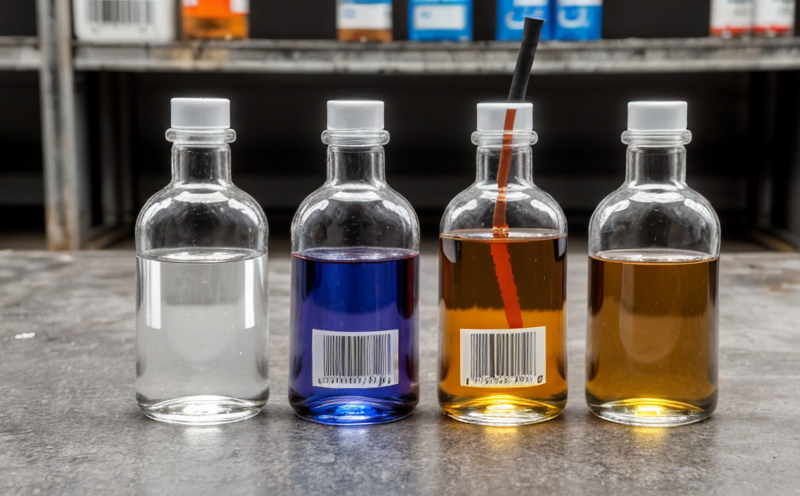ISO 10927 Long Term Stability Testing of Plastics Under Stress
The ISO 10927 standard is a cornerstone in the assessment of long-term stability and durability of plastics, especially under stress conditions. This test is particularly critical for sectors such as automotive, medical device manufacturing, and aerospace where materials need to endure prolonged exposure to environmental factors like temperature fluctuations, humidity, and mechanical stresses. Compliance with this standard ensures that plastic components are reliable and safe over their intended service life.
The testing process involves subjecting the material specimens to a controlled environment designed to simulate real-world conditions. The specimen preparation is meticulous; it includes ensuring uniform thickness and orientation of the plastic sample to accurately reflect its performance in practical applications. Once prepared, these samples undergo exposure to specific stress parameters that mimic anticipated usage scenarios.
The ISO 10927 test requires sophisticated instrumentation capable of maintaining precise control over environmental variables such as temperature, humidity, and mechanical load. The duration of testing can be extended over several months or even years depending on the required simulation time. This prolonged exposure allows for the detection of any degradation processes that may occur within the material structure.
Upon completion of the test, detailed reports are generated highlighting observations made during the course of the experiment. These include measurements of physical properties like tensile strength and modulus, as well as visual inspections for signs of cracking or discoloration indicative of chemical breakdown. The results provide valuable insights into how well the plastic material withstands the specified stress conditions over time.
This testing is not only beneficial for quality assurance but also plays a crucial role in sustainability efforts by ensuring that materials used are robust enough to last longer without compromising performance, thereby reducing waste and resource consumption associated with frequent replacements due to premature failure.
Scope and Methodology
The ISO 10927 long-term stability testing protocol encompasses a series of steps aimed at evaluating the performance characteristics of plastic materials under specified stress conditions. The scope includes defining the environmental factors that will be applied to the specimens, establishing the duration of exposure, selecting appropriate test methods, and determining acceptable levels of degradation.
The methodology involves preparing standardized samples according to prescribed dimensions and surface finishes. These samples are then subjected to controlled environmental chambers where they experience specified temperature ranges, humidity levels, and mechanical loads. The testing period can vary based on the material type and application requirements but typically extends over several months or years.
During the test duration, continuous monitoring is conducted using specialized equipment that measures changes in physical properties of the specimens. Visual inspections are also carried out periodically to observe any visible signs of damage such as cracks, discoloration, or loss of gloss. At intervals defined by the test plan, samples are removed from the chamber for inspection and analysis.
The collected data is analyzed comprehensively to assess compliance with established criteria set forth in ISO 10927. Compliance ensures that the plastic material meets all specified performance requirements under stress conditions. This includes maintaining sufficient mechanical integrity necessary for safe and effective operation throughout its intended lifecycle.
Environmental and Sustainability Contributions
The implementation of ISO 10927 long-term stability testing contributes significantly to environmental sustainability by promoting the use of durable, reliable plastics that require minimal replacement. By ensuring high-quality materials through rigorous testing protocols, industries can reduce their carbon footprint associated with frequent manufacturing and disposal cycles.
Through careful selection of stress parameters and extended exposure times, this testing helps identify potential weaknesses in plastic formulations early on, allowing manufacturers to make necessary adjustments before products reach the market. This proactive approach prevents issues from arising later that could lead to recalls or product failures, thus saving resources and reducing waste.
The results obtained from these tests contribute valuable information for lifecycle assessment studies, aiding in the development of more sustainable practices across various sectors. For instance, automotive manufacturers can optimize their design choices by leveraging data on how different plastics behave under stress conditions, leading to improved fuel efficiency and reduced emissions over time.
Use Cases and Application Examples
| Use Case/Application | Description | Stress Parameters | Data Collected |
|---|---|---|---|
| Aerospace Components | Evaluating the durability of plastic fasteners and connectors used in aircraft structures. | High temperature, humidity variations, cyclic loading | Tensile strength, elongation at break, visual inspection for cracks |
| Medical Devices | Assessing the integrity of implantable devices made from biocompatible plastics. | Simulated body fluid immersion, temperature cycling, static load testing | Bond strength, surface roughness, microbiological contamination levels |
| Automotive Parts | Determining the reliability of dashboard components exposed to sunlight and UV radiation. | UV exposure, temperature cycling, humidity cycling | Colorfastness, flexibility retention, crack propagation rate |
| Consumer Electronics | Testing plastic enclosures for mobile phones against impact forces during manufacturing processes. | Cold and hot cycles, pressure resistance testing, drop tests | Impact strength, deformation thresholds, heat deflection temperature |
The use cases demonstrate the versatility of ISO 10927 in addressing diverse applications across multiple industries. Each case highlights specific stress parameters relevant to the particular application and collects detailed data pertinent to assessing material performance under those conditions.





